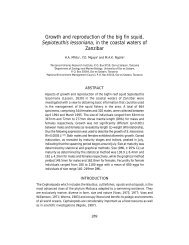gpa_east_africa_case.. - GRID Africa GeoPortal - UNEP
gpa_east_africa_case.. - GRID Africa GeoPortal - UNEP
gpa_east_africa_case.. - GRID Africa GeoPortal - UNEP
You also want an ePaper? Increase the reach of your titles
YUMPU automatically turns print PDFs into web optimized ePapers that Google loves.
Scenarios without Pollution Control Infrastructure• The favourable "No growth but no decline" scenario (2): Under this scenario tourismarrivals (and income) is assumed to remain constant at the present level of 200,000arrivals reflecting the (unlikely) situation of absence of immediate and acuteenvironmental problems.• The more realistic "Tourism Decline Scenario (3): Under this scenario tourism is assumedto decline on average at 5% a year, due to serious environmental degradation, reachingjust under 53,000 by the year 2025.Scenario with Pollution Control Infrastructure• Under this "Tourism Growth Scenario with infrastructure”, tourism is assumed to be ableto maintain its growth trend of 5% per year with arrivals reaching 700,000 by the year2025. It is noted here that it is debatable to envisage or desirable to plan for tourismgrowth without a Carrying Capacity Study and a Coastal Zone Management Strategy.The scenarios shown below are instruments to facilitate the estimate of the impact on tourismwith and without the proposed sewerage system.With ProjectYear (1)Trendgrowth5% p.a.Table 9: Tourism scenariosWithout Project(3)Likely CaseScenario5% decline p.a.(2)Optimistic CaseNo growthScenario(4)Cost(un-discounted)(1-3)2000 200,000 200,000 200,000 02001 210,000 200,000 190,000 20,000 x 945 = 18.92002 220,500 200,000 180,500 40,000 x 945 = 37.82003 231,500 200,000 171,475 60,025 x 945 = 56.72004 243,000 200,000 162,900 80,100 x 945 = 75.72005 255,000 200,000 154,750 100,250 x 945 = 94.72006 268,000 200,000 140,000 128,000 x 945 = 120.92007 281,000 200,000 132,500 148,500 x 945 = 140.32008 293,000 200,000 125,800 167,200 x 945 = 158.02009 310,000 200,000 119,500 190,500 x 945 = 180.02010 325,500 200,000 113,500 212,000 x 945 = 200.32011 342,000 200,000 107,800 235,200 x 945 = 221.32012 359,,000 200,000 102,400 156,600 x 945 = 242.52013 377,000 200,000 97,700 279,300 x 945 = 264.02014 396,000 200,000 92,800 303,200 x 945 = 286.52015 426,000 200,000 88,000 338,000 x 945 = 319.52016 436,500 200,000 83,500 353,000 x 945 = 333.52017 458,000 200,000 79,300 378,700 x 945 = 357.82018 481,000 200,000 75,300 405,700 x 945 = 383.42019 505,000 200,000 71,500 433,500 x 945 = 409.62020 530,000 200,000 67,900 462,100 x 945 = 436.72021 557,000 200,000 64,500 492,500 x 945 = 465.42022 590,000 200,000 61,300 528,700 x 945 = 500.02023 614,000 200,000 58,300 555,700 x 945 = 525.02024 645,000 200,000 55,400 589,600 x 945 = 557.22025 677,250 200,000 52,600 624,600 x 945 = 590.2The above scenarios form the basis for estimating the tourism cost of environmentaldegradation and the future cost-avoiding benefits. The basis is the difference between 5%annual tourism growth with infrastructure and 5% annual tourism decline withoutFinal Draft Report – Cost Benefit Case StudiesGPA Strategic Action Plan on Sewage, October, 200035



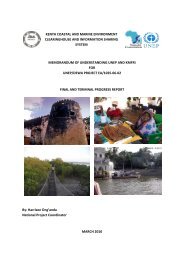
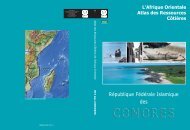
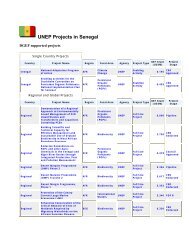

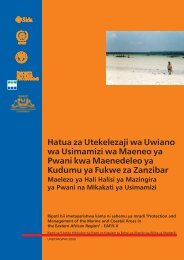
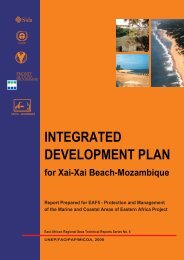
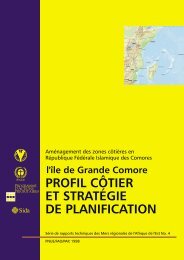
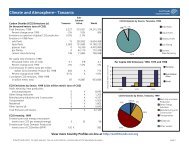

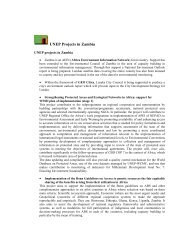
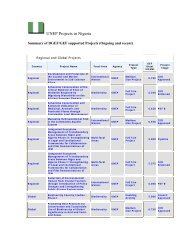
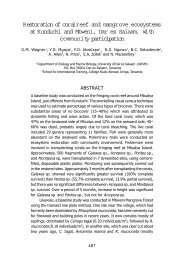
![Please Click to download [English] - GRID Africa GeoPortal - UNEP](https://img.yumpu.com/30633391/1/184x260/please-click-to-download-english-grid-africa-geoportal-unep.jpg?quality=85)
